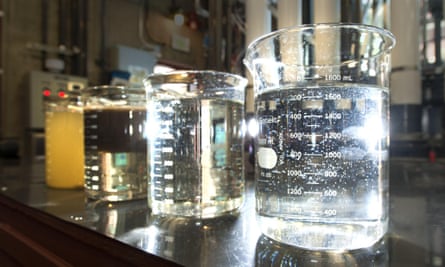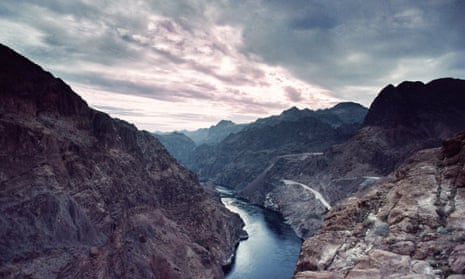The Colorado River no longer reaches the sea; aquifers in the Arabian Peninsula are exhausted; freshwater reserves in China, such as Lake Tai, are polluted. Globally, the picture is bleak: on current trends, demand for water will exceed supply by 40% by 2030.
Aged infrastructure, bad policies and ill-defined markets are part of the problem. But the larger issue is that we simply aren’t as clever as we could be about how we use water. Typically, water becomes more polluted as it travels through the system, rendering future use impossible.
This linear model is economically and environmentally unsustainable. The better approach is to circulate water in closed loops. In this model, water is reused time and again, retaining full value. This is an example of what we refer to as the “circular economy”.
Thinking in circles can help business too. As the successful Billund BioRefinery in Denmark demonstrates, it is now commercially viable to generate heat and power from sludge and other organic wastes through thermal hydrolysis. This process sterilizes the sludge and makes it more biodegradable.
It is also possible to recover a wide variety of substances from water, reducing both waste and costs. This technology has advanced so much that value can be obtained from substances once regarded as contaminants. For instance, ammonia removed from water can be used in the production of ammonium sulphate fertiliser.
Here are four suggestions for how we might turn today’s one-way water traffic into an endless, profitable and environmentally sustainable loop.
1. Re-use and recycle
There have been significant improvements in membrane-basedtreatments that separate water from contaminants, allowing for re-use and commercialisation. Many types of water benefit from this treatment, from “grey” household-waste water to Singapore’s NEWater, which is high-grade reclaimed water that is so pure that water-fabrication plants use it.
Experts have also developed new source-separation systems that reduce mixing between chemical-carrying industrial and greywater, making purification easier. In Qatar, the Pearl Gas to Liquids complex has a water-recycling plant – the largest of its kind – that can process 45,000 cubic meters of water per day without discharging any liquids.

2. Invest in basin management
Strategies that promote the vitality of a watershed, such as forest management and wetlands restoration, are also circular. The list of successful watershed-protection programmes is long, ranging from New York’s Catskill Mountains to Bogotá, and many additional opportunities exist.
From Évian-les-Bains to Quito, floodplain protection has proved an effective way to reduce the risk of flooding and to prevent freshwater contamination. Attempts to improve basin management often fail, however, because they require the cooperation of many different parties, as well as sophisticated understanding of hydrology and engineering.
3. Sell performance, not water
Instead of charging for water by the cubic meter consumed, utilities could pay consumers for curbing use and then sell the conserved volume, or “nega-water”, back to the system. Utilities should also promote conservation by selling double-flush toilets and similar devices, or by offering different levels of service, pricing and convenience, with the goal of encouraging consumers to reduce use.
4. Monetise organic nutrient cycles
Many communities struggle to cope with the low-quality sludge and the fragmented, contaminated streams of organic waste typical of that produced by households and businesses. At the same time, specialists are exploring new sources for nutrients. By aggregating local organic waste flows, communities could solve the waste problem while creating vibrant local markets for fertiliser components.
The shift to a circular water economy holds much promise. It would replace scarcity with abundance and greatly reduce the resources needed to run our global water infrastructure. A circular water economy might even eliminate rapidly growing clean-up costs because no harmful substances would be added to the water supply.
Since water is the most important shared resource across all supply chains, and wastewater is the largest untapped waste category, it is the natural starting point for the circular revolution.
The water hub is funded by Grundfos. All content is editorially independent except for pieces labelled ‘brought to you by’. Find out more here.
This content is brought to you by Guardian Professional. Become a GSB member to get more stories like this direct to your inbox.

Comments (…)
Sign in or create your Guardian account to join the discussion